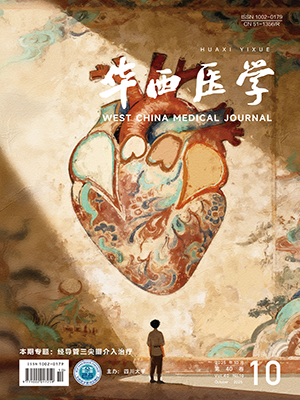| 1. |
李六亿. 走中国特色的医院感染管理学科发展之路. 中华医院感染学杂志, 2017, 27(14): 3126-3130, 3138.
|
| 2. |
牛延军. 医院感染岗前培训与医院感染控制文化建设. 中华医院感染学杂志, 2012, 22(21): 4878.
|
| 3. |
刘芳, 茅一萍, 祁琪, 等. 医院感染预防与控制教育的发展与对策. 中华医院感染学杂志, 2023, 33(10): 1596-1600.
|
| 4. |
杨晓华, 张明, 马磊. 我国临床医学生医院感染防控实践教育的现状、问题与对策分析. 医学教育研究与实践, 2021, 29(5): 687-690.
|
| 5. |
曹敏, 孙佳音, 黄超, 等. 江西省 6 个地级市辖区内二级及以上医院医院感染培训效果评价. 华西医学, 2022, 37(4): 556-560.
|
| 6. |
程桂兰, 黎贵湘, 王定玺, 等. 案例教学法联合情景演练在实习护生入科医院感染与预防控制培训中的应用. 华西医学, 2020, 35(3): 348-351.
|
| 7. |
欧阳育琪, 吴安华, 任南, 等. 郴州市乡镇卫生院医院感染管理知识培训效果评价. 中国感染控制杂志, 2013, 12(5): 384-385, 387.
|
| 8. |
Kardong-Edgren S, Adamson KA, Fitzgerald CE, et al. A review of currently published evaluation instruments for human patient simulation. Clin Simul Nurs, 2010, 6(1): e25-e35.
|
| 9. |
宁晓荣. 多元化院内感染知识培训对新入职医护人员医院感染知识掌握率的影响分析. 中国药物与临床, 2020, 20(4): 543-544.
|
| 10. |
洪澄英, 刘晓娣, 刘晓君, 等. 模拟教学在住院医师规范化培训经口气管插管教学中的应用体会. 中国毕业后医学教育, 2018, 2(6): 447-450.
|
| 11. |
王慧敏, 范小兰, 朱金艳. 微视频结合情景模拟教学在口腔医院新护士医院感染培训中的应用. 护理与康复, 2023, 22(4): 58-60.
|
| 12. |
翟敬芳, 张蓓, 吴杰斌, 等. 情景模拟联合经验学习循环在医学教师培训中的效果. 中国继续医学教育, 2019, 11(32): 47-50.
|
| 13. |
Rooney MK, Zhu F, Gillespie EF, et al. Simulation as more than a treatment-planning tool: a systematic review of the literature on radiation oncology simulation-based medical education. Int J Radiat Oncol Biol Phys, 2018, 102(2): 257-283.
|
| 14. |
Hinkin J, Cutter J. How do university education and clinical experience influence pre-registration nursing students’ infection control practice? A descriptive, cross sectional survey. Nurse Educ Today, 2014, 34(2): 196-201.
|
| 15. |
Yurrebaso Macho A, Ward Mayens AL, Picado Valverde EM, et al. Nursing students’ perceptions on healthcare-associated infection control and prevention teaching and learning experience: development and validation of a scale in four European countries. Front Psychol, 2021, 12: 701208.
|




